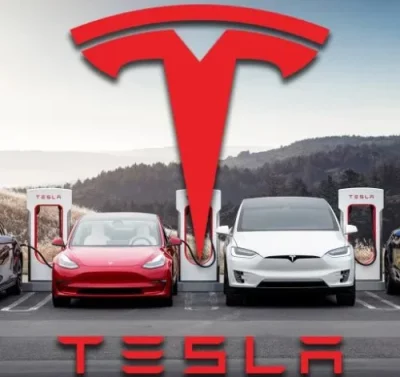The worry about the climate had driven individuals to build their advantage in electric vehicles. This, however, the expense of fuel can likewise diminish as all it needs are electric-drive parts. According to reports, the value of the electric vehicles market would be INR 475 billion by 2025.
The approaching ten years is expected to be a definitive ten years for the eventual fate of electric vehicles in India. With battery sums allegedly falling up to 73%, electric-controlled vehicles are expected to be pretty much as sensibly evaluated as internal combustion vehicles inside the not-so-distant future. The International Energy Agency refers to that there would be 70 million electric vehicles by 2025. Till 2026, the EV market is booked to develop at a CAGR of 36%.
Under the Make in India program, the creation of e-vehicles and their connected added substances is expected to build the level of creation in India’s GDP by up to 25% by 2022. On the financial front, the enormous scope reception of electrical vehicles is projected to help save $60 billion on oil imports by 2030.
Countries like the UK, France, Norway, and India are going to embrace e-portability on a greater scale. India has burdens to the upside of the monstrous reception of e-portability. Under the Make in India program, the creation of e-vehicles and their connected added substances is expected to build the level of creation in India’s GDP by up to 25% by 2022.
On the money-related front, the huge scope reception of electrical vehicles is projected to help save $60 billion on oil imports by 2030.
India offers the world’s biggest undiscovered EV market, particularly in the bike fragment. With a few automakers carrying out EV vehicles at a quick speed, the entrance of these vehicles has expanded fundamentally in a couple of years. According to a new report, the electric vehicles (EVs) market is supposed to be worth around something ₹475 billion by 2025. The entrance of electric bikes is projected to reach up to 15% by 2025 from 1% right now.
As business exercises gain pace and the Indian economy bounces back its direction in 2022, the vehicle business is set to enter another period of development, advancement, and speculation. In any case, the way to the fate of EVs is fighting different difficulties. While the public authority is forcefully advancing EV reception in India, the deficient foundation, absence of high-performing EVs and the high forthright expense are making a significant obstruction to its mass reception.
Current Situation of the Electric Vehicle Market in India
At present, 84% of India’s oil name is satisfied through imports. The cost of gas could likewise furthermore have to fall, helping an electric-controlled vehicle proprietor can save as much as Rs20,000 for each 5,000km crossed. At long last, jolt will decrease vehicular emanations, a critical supporter of air toxins which reasons a normal of 3% GDP misfortune every year.
The electric vehicle industry in India obligations for 22% of the country’s general creation yield and is the 6th greatest industry on the planet. Reports propose that EVs can play a fundamental situation in developing the level of creation in India’s GDP from 15% (presently) to 25% during that time 2022.
Future of Electric Vehicles in India
All around the world, the expense for lithium-particle batteries is roughly $250/kWh, this sums roughly to Rs5.7 lakh in battery charges alone. At present, lithium-particle batteries represent half of the cost of an electric-fueled vehicle, making them exorbitant when contrasted with customary autos.
Security of the batteries from blast goes about as a spanner for Li-particle batteries. A dominating obstacle for EVs in India s charging, or the lack of charging stations can likewise be thought of, consequently making them illogical or tons less feasible for extensive distance drives. Besides, a few EVs aren’t quite as fast as conventional internal combustion engines.
Most buyers in India could buy an electric-controlled vehicle by 2022, but a greater part of them furthermore believe that it might likewise now presently not be accessible till 2025. Buyers in India are looking for a diminished sum for EVs than buyers in various countries, with the overall normal tipping sum for EVs being $36,000 (around Rs27 lakh). Castrol took more than 1,000 buyers, armada directors, and endeavor experts all through India.
At a basic crossroads, while all countries are taking part in freeing Mother Earth from the paws of fossil fuel byproducts, and CO2, India can play an administrative role by exchanging over to EV portability to make the country a greener and cleaner nature.
By 2030, 80% of two and three-wheelers, 40% of transport, and 30 to 70% of vehicles in India will be electric vehicles, says the NITI Aayog. As the country gears toward its ‘Zero-outflow’ 2070 dream, assets and centers are coordinated toward electric portability.
In March 2022, Minister for Road Transport and Highways, Nitin Gadkari referenced in the Parliament that between 2019-2020 and 2020-2021, the bike EVs rose by 422%; three-wheelers by 75% and four-wheelers up by 230%. The number of electric transports likewise expanded by more than 1,200%.
India’s street to a completely electric biological system actually has a couple of obstacles – High expense, insufficient foundation, and absence of high-performing EVs the electric variations of the 2 and 4-wheelers are frequently estimated a lot higher than customary fuel choices. This is the main justification for the sluggish reception of electric portability.
More than 60% of shoppers accept that an EV is past their spending plan.
The upkeep costs are high basically because of the absence of vital conveniences. There are in excess of 65,000 petroleum bunks in India yet just 1640 EV charging stations.
The EVs in India so far have just been variations of the generally accessible petroleum product-driven 2 and 4-wheelers. High-performing extravagance variations or supercars like the Teslas are yet to raise a ruckus around town markets.
Expecting to change over additional buyers into Electric Vehicle proprietors, the public authority is offering appropriations for buying electric vehicles. A duty exception of Rs 1.5 lakh is likewise given for individuals purchasing electric vehicles borrowed. The GST for the acquisition of EVs is set at only 5% with zero cesses.
During two periods of the FAME or quicker reception and assembling of crossbreed and electric vehicles conspire, the public authority has been attempting to work on the framework for electric vehicle production in the country. There is likewise an arrangement for 22,000 EV charging stations to be set up by Oil Marketing Companies the nation over.
In the 2022 financial plan, a battery trading strategy was declared as a simpler method for charging EVs. Last year, the public authority likewise reported a Production Linked Incentive plan for automakers, a piece of which expects to support electric vehicle fabricating.
Impact of COVID-19 on the Electric Vehicle Industry
During the pendency of COVID-19, we saw how the environmental elements advanced because of the reality of lesser emanations from petroleum and diesel-run engines and businesses in India. In numerous urban areas, the exhaust cloud totally disappeared. In a huge number of India, individuals ought to try and view distant mountains that were current as of now not feasible for them to search for a really long time because of the reality of the environmental hindrances made because of the discharge of the smoke from fossil-gas run engines. By exchanging over for clean-unpracticed power run EVs, we will make skies gem understood, allowing us to concentrate on remote spots. EVs keep the basic thing to never-ending replies of a superior, cleaner India for the manageability of its general population.
The pandemic might have come as an inconsiderate shock for questioning Thomases who accepted that the fate of portability is something different. While deals of customary traveler vehicles and bikes in the nation declined north of 9% and 13 percent, separately, in FY21, electric two-and four-wheelers avoided the pattern and posted noteworthy development.
Deals of electric bikes flooded more than 64%, while four-wheelers became north of 68%. Indeed, this is on a little base, yet reassuring. In a year where almost two months were lost because of lockdown, it is the clearest sign yet that subsequent to faltering for quite a long time, the electric versatility story is on target towards an expression moment that it will become standard.
“Coronavirus helped us out as supportability and individuals’ inclination for greener vehicles expanded, as did the inclination towards private versatility. We accept the business is simply beginning and there are energizing times in front of us,” says Nagesh Basavanahalli, Group CEO and Managing Director, Greaves Cotton, which gained an electric bike organization Ampere Vehicles in 2018. “We are starting to see footing. We outperformed the entire year execution of FY2020 in only nine months of FY2021 notwithstanding Covid.”
The reach is the critical variable here ie.15km overall, while a city taxi likewise can moreover do 300km day to day. In a brilliant world, we could have a more modest battery rate and certainly need to occasionally re-energize. By and by, taxi and armada engines can bring in cash for the time being, or even private clients can likewise moreover have limits on charging choices, without quick charging.
A foundation for quick charging an EV requires an exceptional arrangement of additional strength than 15-amp attachments, which might give roughly 3 kW of solidarity, so 35 kWh requires almost 12 hours. Not at all like the US, most extreme Indians don’t have a confidential carport. Subsequently, standard size and company-skeptic public charging foundation will turn into a key inclusion decision.
Indians are broadly cost cognizant. To this end, clients love diesel vehicles, despite their better MRP and contaminations compared with their petroleum partners. The worth of EVs depends on power cost, which differs fundamentally. At Rs7/kWh (kilowatt-hour) of solidarity, they esteem roughly Rs1.1/km This recoveries client riding 5,000km consistently over Rs20,000 every year and guarantees a striking arrangement. With the Make in India drive, there is an opportunity will see an expansion in the creation of EVs.
The catch is the development esteem. EVs are costly, usually because of the battery. A solitary kWh of force is adequate to head roughly 6 km, so a 200km “complete tank” assortment calls for roughly 35 kWh of battery. The present charges for lithium-particle batteries are around $250/kWh universally, which includes Rs5.7 lakh in battery costs, except for import obligations. Indeed, even with an eight-year life expectancy and a 12% loan cost, supporting the battery costs on consistent with kilometer monetary reserve funds. Be that as it may, while battery charges tumble to $100/kWh, as extended a few years out, EVs can arise as an entertainment transformer.
Auto industry shake-up
The Indian government has distributed motivators to a plan, Faster Adoption and Manufacturing of Hybrid and Electric Vehicles in India (FAME), and has presented a few organic market side impetuses to work with the change to EVs.
As a matter of fact, a few states have likewise set their own aggressive EV targets: 18 out of 28 states have either a draft strategy set up or have previously informed one.
“EVs can assist with accomplishing that as well as assist with diminishing the nation’s oil imports and save unfamiliar trade, taking India to a higher degree of independence,” said Piyush Goyal, the priest of business and industry as of late.
Specialists accept that vehicle zap will undoubtedly assume a significant part in discharge decrease from India’s street transportation area and support the battle against environmental change.
With India’s responsibilities at the COP26 culmination to accomplish net-zero outflows status by 2070 and bring down its discharge force by 45% from 2005 levels by 2030, EVs could assist with understanding these objectives and assume a crucial part in its green story.
The vehicle area represents 18% of complete energy utilization in India which means an expected 94 million tons of oil same (MTOE) energy.
Top 5 Reasons Why Electric Vehicles Are the Future of Driving In 2022
The worldwide market for electric vehicles (EVs) is developing ceaselessly at an accumulated annualized development rate (CAGR) of 21.7 percent. It is normal to develop from 8.1 million units to 39.21 million units by 2030. This remarkable development is being driven by different elements, including worries about contamination.
States all around the world are empowering the EV business through appropriations and guidelines, and the purchasers are requesting low-discharge driving rather than petroleum product-driven vehicles, which are imperiling our planet.
At the point when the main EVs were made/presented, exceptionally high starting expense, low battery range, low speed, and much lower natural worries brought about the business not taking off. The most recent 10 years, however, have seen widespread premium among unique gear makers (OEMs), clients, and state-run administrations, bringing about tremendous speculations being made in EV assembling and battery innovation, bringing about a large number of vehicles getting sold in different nations.
All the major worldwide and Indian OEMs have put resources into and sent off EVs, and an enormous number of new OEMs have drawn in tremendous ventures and sent off exceptionally fruitful models, constructing the interest for EVs, and in this manner making unicorns, as well.
Tesla has been one of the best EV organizations/brands on the planet, yet others, including Mercedes Benz, Tata, MG, GM, Audi, Hyundai, Nissan, BMW, and Renault have likewise sent off EVs, which are getting client interest in various business sectors.
There is no question that EVs are the fate of driving and portability, and keeping in mind that more up-to-date materials might be utilized in battery science, and developments will continue to happen, the pattern is irreversible on account of the accompanying reasons:
1. Significant cost savings on running and maintenance:
Running and upkeep costs are a significant piece of the possession cost of any vehicle, and it is currently deeply grounded that EV purchasers spend considerably less on fuel/energy and support, as EVs have fewer moving parts than a gas motor, which makes it more straightforward to keep up with.
EVs do have not very many parts that might break or need any maintenance or substitution. In this way, there is a compelling reason need to stress over changing the motor oil, subsequently making it simpler to keep up with electric vehicles at a lower cost.
Oil, being a prevailing energy source, causes a large number of issues, as transportation stays subject to oil. However, an electric vehicle offers a spotless and better method of transportation for everybody. The expansion in the number of electric vehicles out and about will decrease the interest for a great many barrels of oil from here on out.
2. Eco-friendly savings on CO2 emissions:
Moving to electric portability will assist India with saving almost one Giga ton of carbon dioxide outflows by 2030. Every electric vehicle out and about helps in decreasing unsafe air contamination for the more youthful ages to come. The entire world is battling a dangerous atmospheric deviation and extraordinary environmental change, which is expanding clashes and political strains between countries. Vehicle purchasers are prepared to do their piece for the climate by moving to EVs, which have zero tailpipe outflows, and will eventually assist with saving our current circumstances from exhaust clouds and environmental change.
This is an incredible drive toward lessening natural harm and supporting general well-being. The lesser weariness of unsafe emanations will prompt better air quality, and that implies fewer medical conditions.
3. Incredible driving experience by reducing driving fatigue/stress:
Electric vehicles don’t have gears, which guarantees an incredible driving involvement in no muddled controls. Simply speed up, brake, and guide to oversee and partake in a quiet, helpful, safe, and commotion complimentary lift.
Lesser clamor is one more added advantage of utilizing an electric vehicle. The electric engines are extremely peaceful contrasted with gas-powered motors and their fumes frameworks. A few examinations show that vehicle commotion can have many adverse consequences, for example, expanded uneasiness, despondency, hypertension, heart infections, stroke, etc. The commotion contamination may likewise expand the gamble of serious burdensome side effects in people.
4. Convenient charging:
Electric vehicles depend on power to charge their batteries as opposed to utilizing non-renewable energy sources like petroleum or diesel. With more EV battery energizing stations popping up now, it will be simpler for the clients to charge the batteries at a close-by station as opposed to stand by in a long line at the CNG stations or petroleum siphons. The EV proprietors can likewise decide to accuse the batteries of charging gear from the solace of their homes.
5. Tax benefits:
Purchasing or renting an EV can give you a benefit in charge of reserve funds. On the off chance that you have an electric vehicle enrolled in your organization’s name, you can benefit yourself of the 40% deterioration in the primary year to save money on personal assessment. The public authority is likewise supporting your concept of purchasing an electric vehicle and has proactively presented an EV strategy under which you can profit yourself of extra advantages of up to Rs 1.5 lakh.
Conclusion
The electric vehicle market will see a flood before very long. With the worry for the climate and the flooding cost of fuel, the requirement for electric vehicles has expanded and will do likewise from now on. Assuming that an appropriate framework is given and assuming it becomes reasonable and approaches each shopper bunch, the EV market could become perhaps of the greatest business in the country.
Electric vehicles are what’s to come! The assembling organizations are investing more energy into moving from conventional vehicles to electric vehicles. There are a lot of advantages to possessing an electric vehicle with the perfect proportion of usefulness and foundation. With so many upsides, this could be the year to claim a battery-controlled vehicle.
















